Abstract
Weight/height2 (W/H2) was found to be the `best' power-type weight-height index for men of all ages above 40 when examining the 10,000 Israel civil servants. These were all men aged 40 and over from six major areas of birth in Europe, North Africa, the Middle East, and Israel. This finding confirms other work done with widely different cultural groups.
The association of this W/H2 index was examined in respect of several demographic and other socio-economic variables. The major findings were as follows:
W/H2 rises with age until 50, then plateaus until 60, after which there appears to be a slight drop.
Israeli-born subjects showed the highest index and those born in the Middle East the lowest index.
A general increase in the index occurred over the five years of observation except at age 60 and over.
Low values were associated with `professionals' on the one hand, and `labourers' and those with `no schooling' on the other.
Immigrants who came during or immediately after the second world war were the `leanest' of all immigrants when examined about 20 years later.
The previous finding that cigarette smokers (particularly medium and heavy smokers) showed a low value in comparison with ex-smokers and those who had never smoked was confirmed.
Ex-smokers, particularly those who had previously smoked heavily, were more overweight than smokers and those who had never smoked.
The findings suggest that ex-smokers gain weight fairly rapidly and then gradually reduce to the weight of those who never smoked but not to that of smokers. In order to verify this finding, a follow-up of ex-smokers is needed.
Self-reported physical activity was associated with a lower W/H2 index for smokers, and to a lesser extent for ex-smokers, but did not seem to have an appreciable effect on those who had never smoked.
Dietary variables as measured by our questionnaire were not found to be associated with the W/H2 index.
Full text
PDF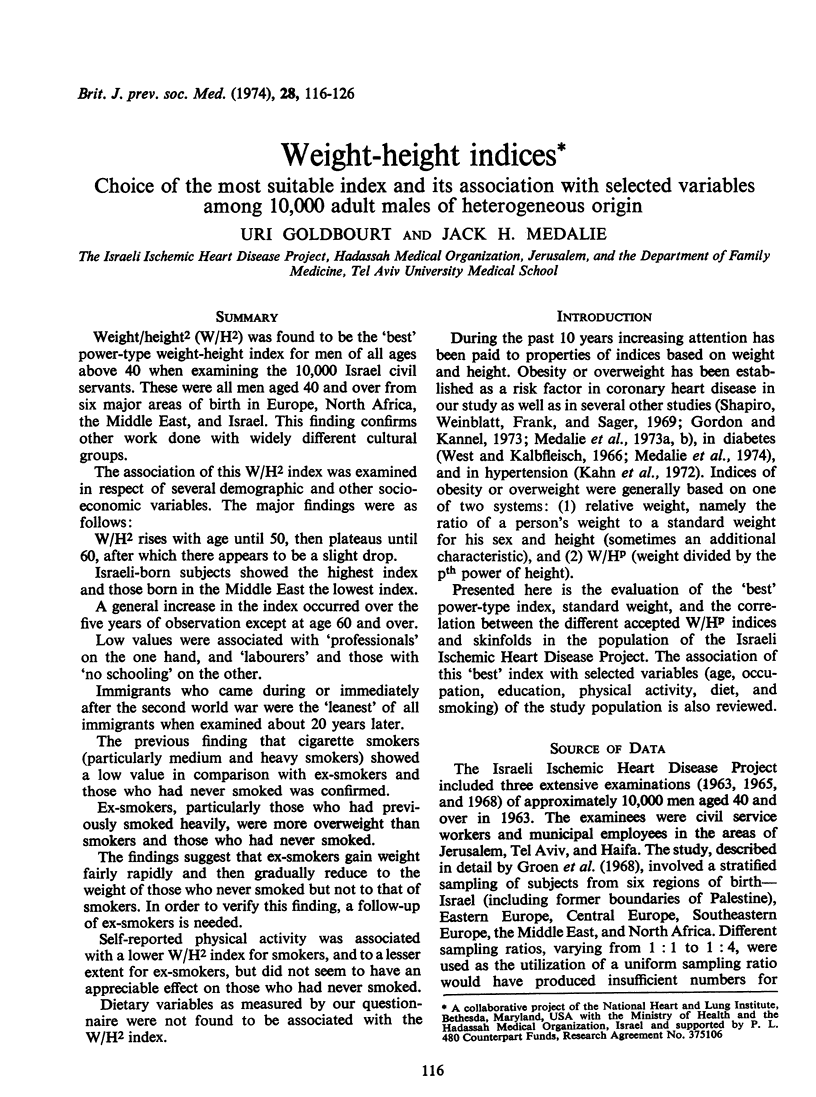
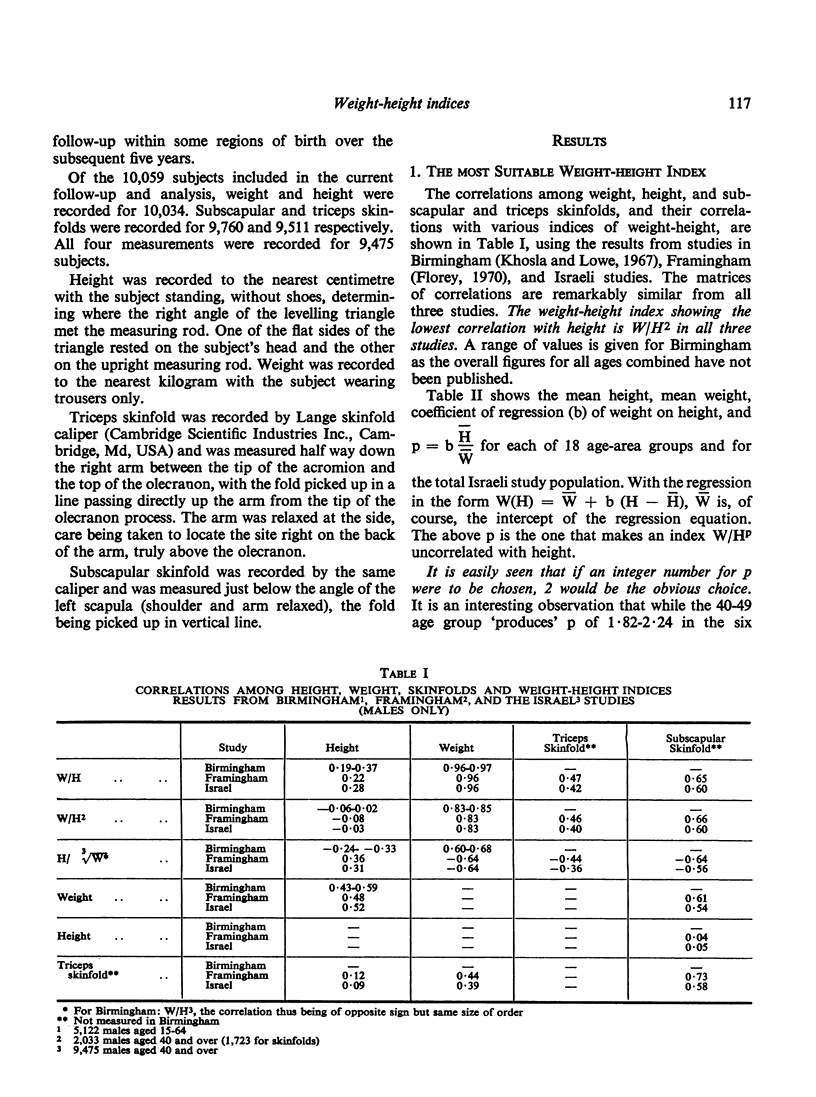
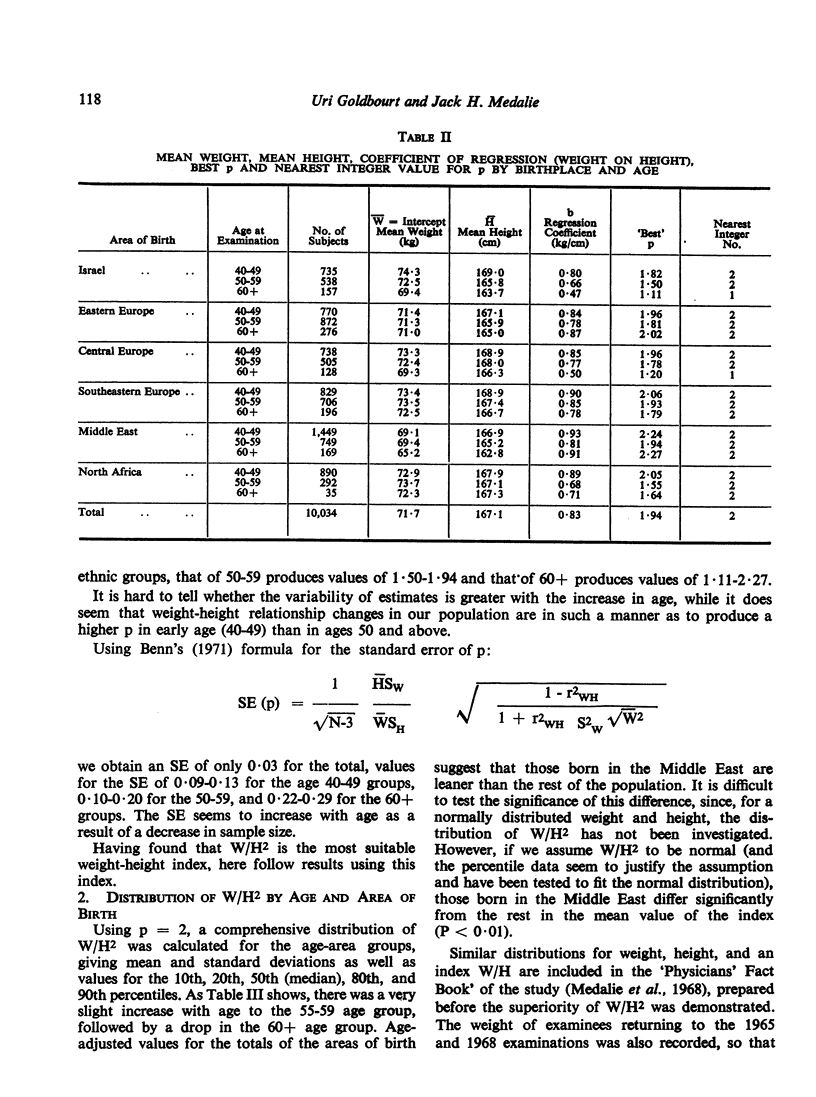

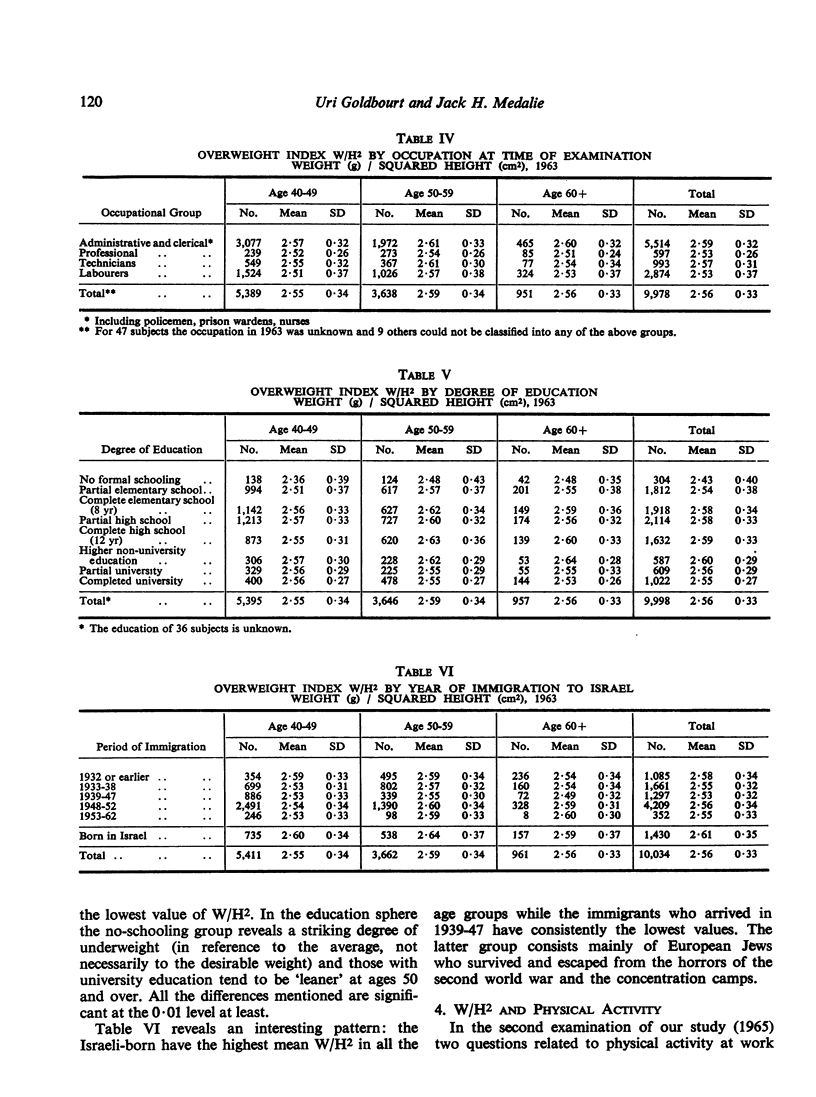
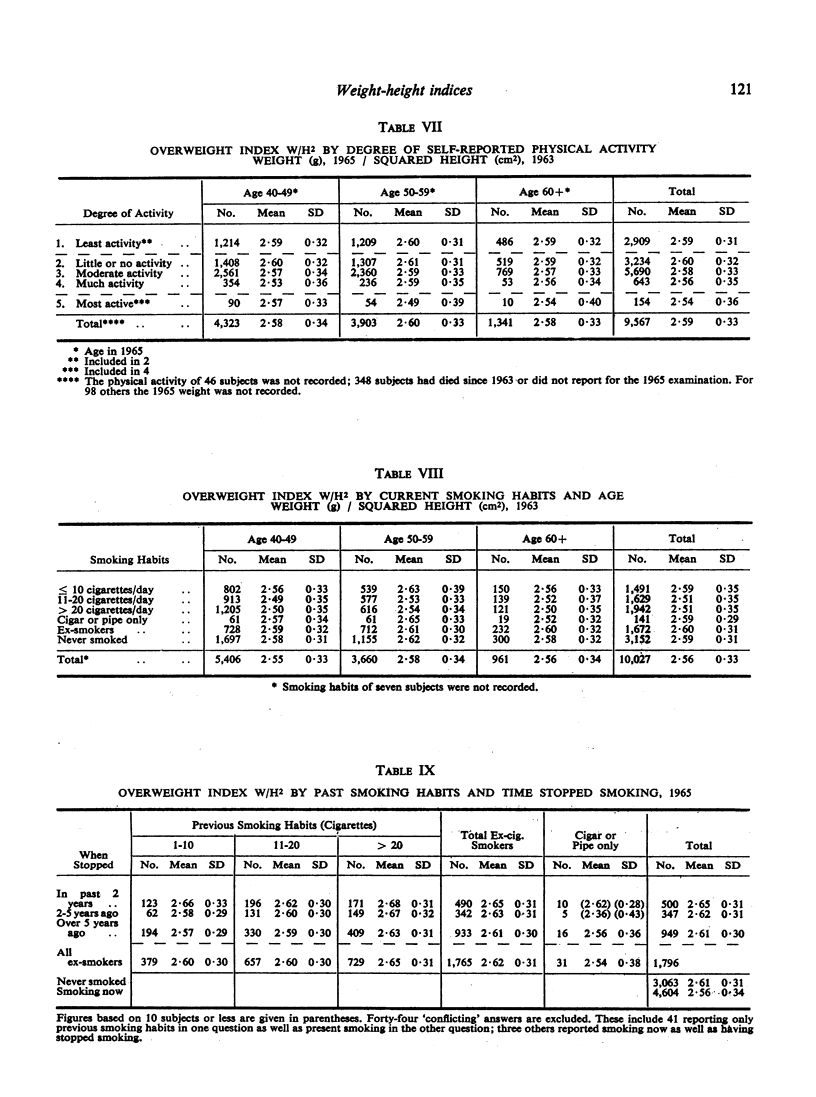
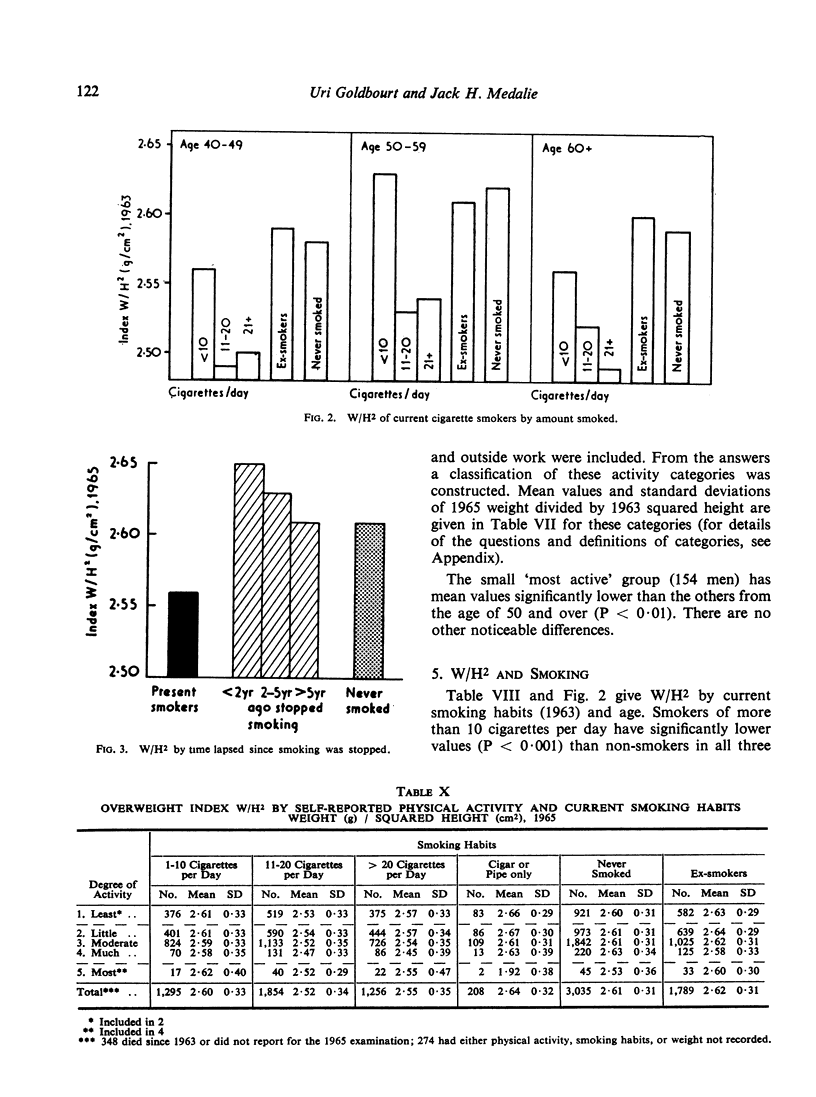
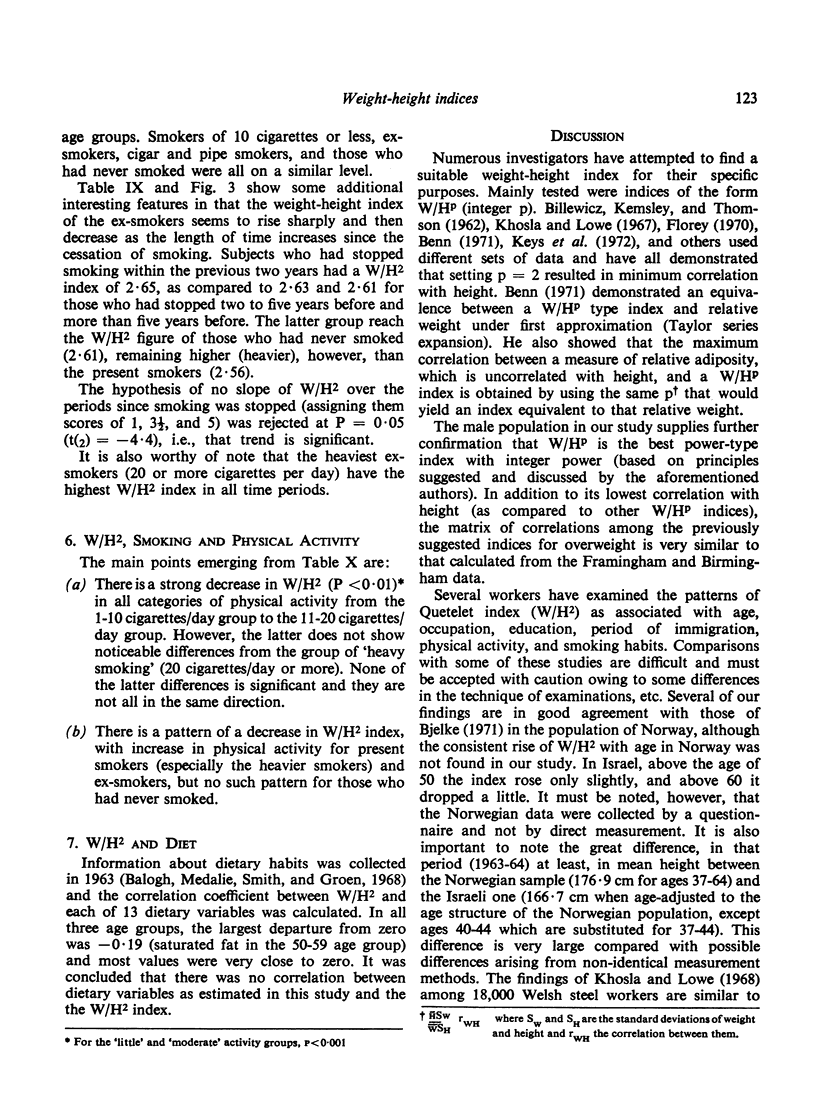
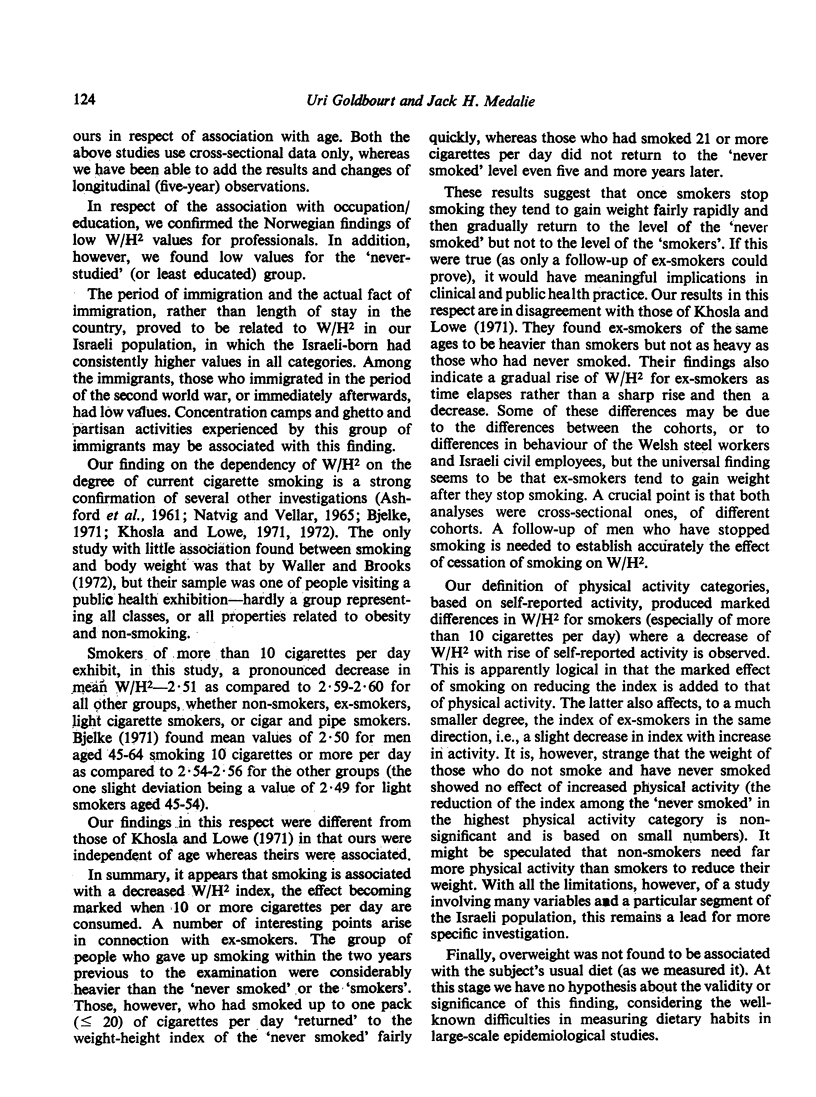
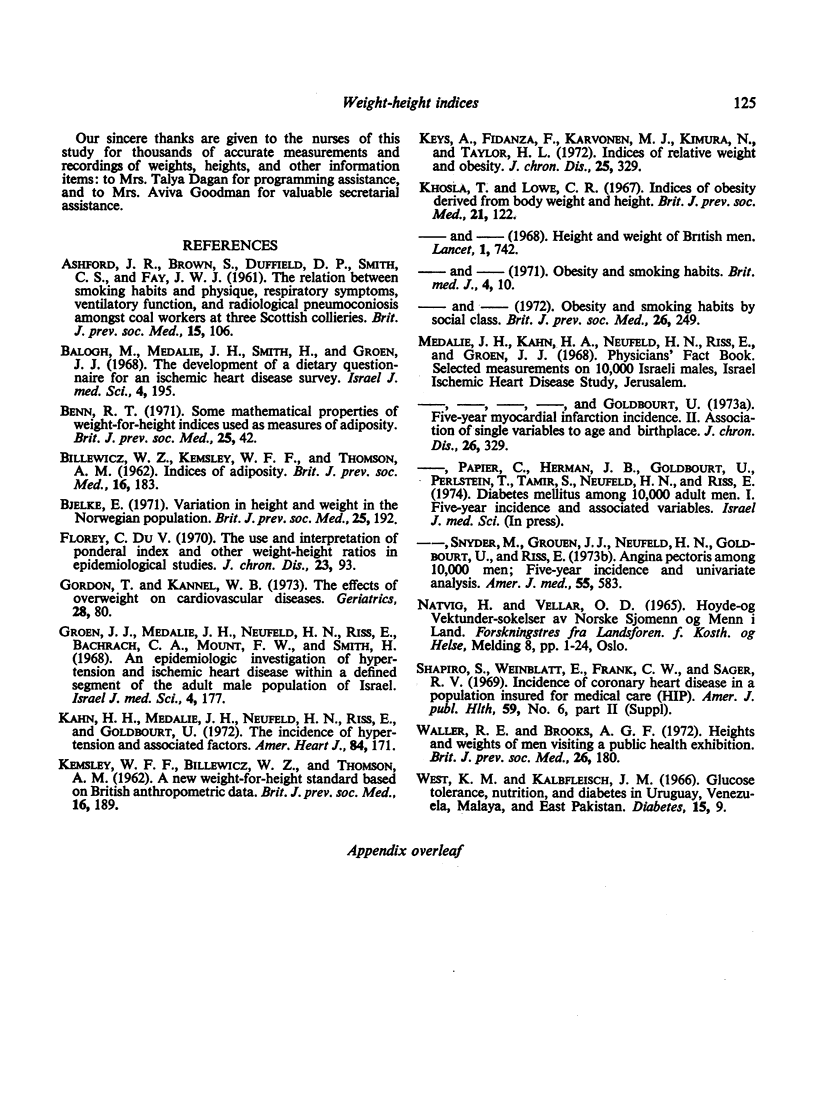
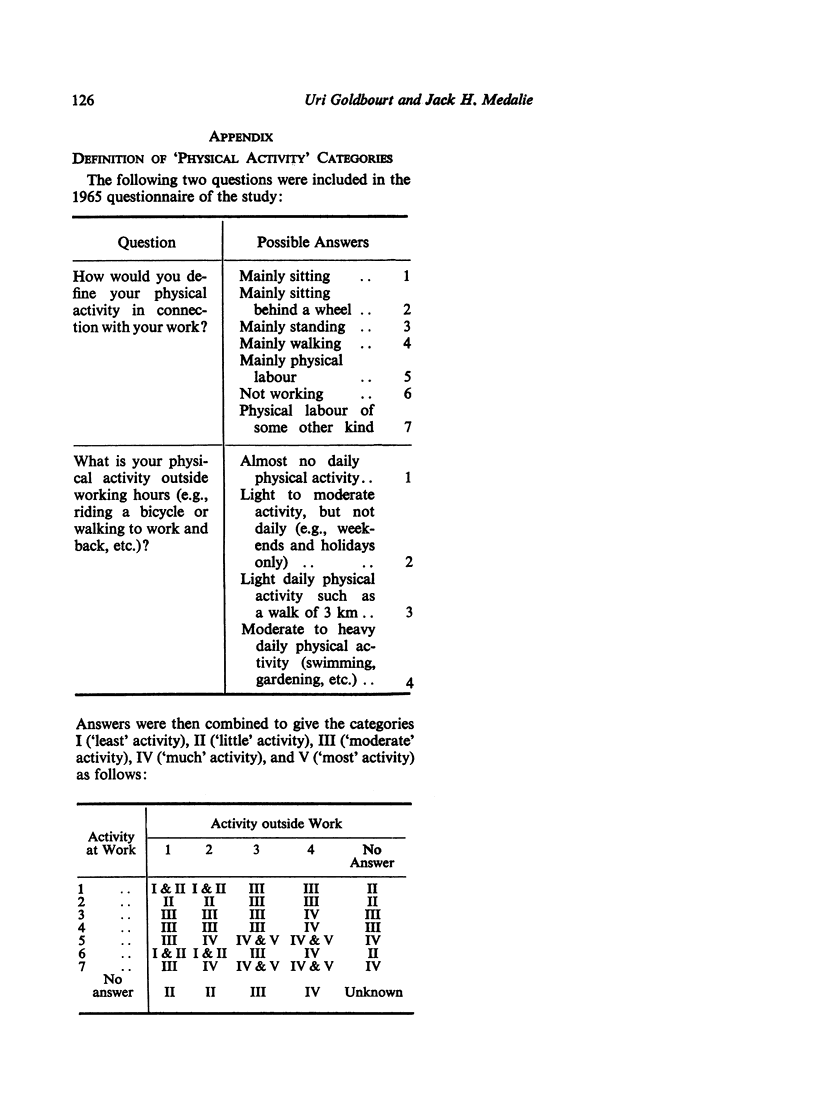
Selected References
These references are in PubMed. This may not be the complete list of references from this article.
- ASHFORD J. R., BROWN S., DUFFIELD D. P., SMITH C. S., FAY J. W. The relation between smoking habits and physique, respiratory symptoms, ventilatory function, and radiological pneumoconiosis amongst coal workers at three Scottish collieries. Br J Prev Soc Med. 1961 Jul;15:106–117. doi: 10.1136/jech.15.3.106. [DOI] [PMC free article] [PubMed] [Google Scholar]
- BILLEWICZ W. Z., KEMSLEY W. F., THOMSON A. M. Indices of adiposity. Br J Prev Soc Med. 1962 Oct;16:183–188. doi: 10.1136/jech.16.4.183. [DOI] [PMC free article] [PubMed] [Google Scholar]
- Balogh M., Medalie J. H., Smith H., Groen J. J. The development of a dietary questionnaire for an ischemic heart disease survey. Isr J Med Sci. 1968 Mar-Apr;4(2):195–203. [PubMed] [Google Scholar]
- Benn R. T. Some mathematical properties of weight-for-height indices used as measures of adiposity. Br J Prev Soc Med. 1971 Feb;25(1):42–50. doi: 10.1136/jech.25.1.42. [DOI] [PMC free article] [PubMed] [Google Scholar]
- Bjelke E. Variation in height and weight in the Norwegian population. Br J Prev Soc Med. 1971 Nov;25(4):192–202. doi: 10.1136/jech.25.4.192. [DOI] [PMC free article] [PubMed] [Google Scholar]
- Florey C. du V. The use and interpretation of ponderal index and other weight-height ratios in epidemiological studies. J Chronic Dis. 1970 Aug;23(2):93–103. doi: 10.1016/0021-9681(70)90068-8. [DOI] [PubMed] [Google Scholar]
- Gordon T., Kannel W. B. The effects of overweight on cardiovascular diseases. Geriatrics. 1973 Aug;28(8):80–88. [PubMed] [Google Scholar]
- Groen J. J., Medalie J. H., Neufeld H. N., Riss E., Bachrach C. A., Mount F. W., Smith H. An epidemiologic investigation of hypertension and ischemic heart disease within a defined segment of the adult male population of Israel. Isr J Med Sci. 1968 Mar-Apr;4(2):177–194. [PubMed] [Google Scholar]
- KEMSLEY W. F., BILLEWICZ W. Z., THOMSON A. M. A new weight-for-height standard based on British anthropometric data. Br J Prev Soc Med. 1962 Oct;16:189–195. doi: 10.1136/jech.16.4.189. [DOI] [PMC free article] [PubMed] [Google Scholar]
- Kahn H. A., Medalie J. H., Neufeld H. N., Riss E., Goldbourt U. The incidence of hypertension and associated factors: the Israel ischemic heart disease study. Am Heart J. 1972 Aug;84(2):171–182. doi: 10.1016/0002-8703(72)90331-6. [DOI] [PubMed] [Google Scholar]
- Keys A., Fidanza F., Karvonen M. J., Kimura N., Taylor H. L. Indices of relative weight and obesity. J Chronic Dis. 1972 Jul 1;25(6):329–343. doi: 10.1016/0021-9681(72)90027-6. [DOI] [PubMed] [Google Scholar]
- Khosla T., Lowe C. R. Indices of obesity derived from body weight and height. Br J Prev Soc Med. 1967 Jul;21(3):122–128. doi: 10.1136/jech.21.3.122. [DOI] [PMC free article] [PubMed] [Google Scholar]
- Medalie J. H., Snyder M., Groen J. J., Neufeld H. N., Goldbourt U., Riss E. Angina pectoris among 10,000 men. 5 year incidence and univariate analysis. Am J Med. 1973 Nov;55(5):583–594. doi: 10.1016/0002-9343(73)90179-4. [DOI] [PubMed] [Google Scholar]
- Waller R. E., Brooks A. G. Heights and weights of men visiting a public health exhibition. Br J Prev Soc Med. 1972 Aug;26(3):180–185. doi: 10.1136/jech.26.3.180. [DOI] [PMC free article] [PubMed] [Google Scholar]
- West K. M., Kalbfleisch J. M. Glucose tolerance, nutrition, and diabetes in Uruguay, Venezuela, Malaya, and East Pakistan. Diabetes. 1966 Jan;15(1):9–18. doi: 10.2337/diab.15.1.9. [DOI] [PubMed] [Google Scholar]


